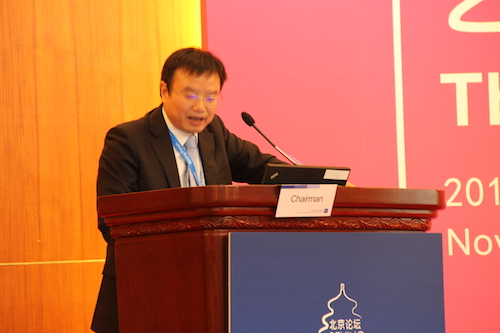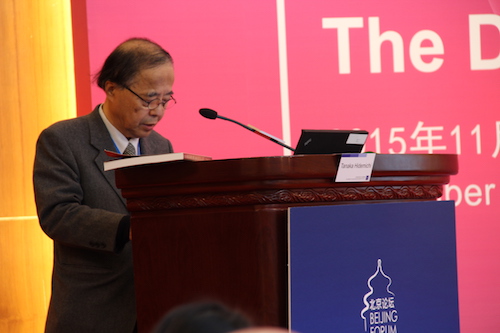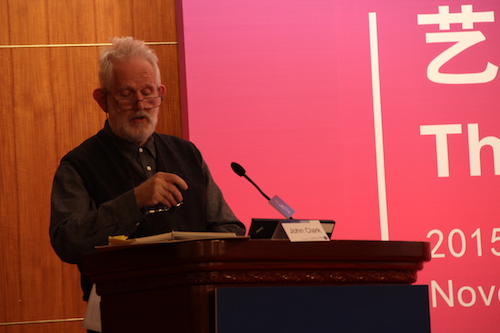On November 6, 2015, one of the major panel sessions of the Beijing Forum, The Diversity of Art History was held in the Multi-Function Room of the Diaoyutai State Guest House.
The panel session, which included six major speeches, was opened by the remarks of Zhu Qingsheng and Peng Feng. Zhu, a professor in Peking University who is famous among students for his art history course, gave a humorous talk on his understanding of the topic. From his perspective, the concept of “art history” can be conceived both widely as all the creative and aesthetic activities and from different angles of formative arts. Zhu related the art of today to history and culture, and Peng articulated the similarities and differences between art and aesthetics.

The first speaker, Professor Tanaka Hidemichi, conveyed his idea under the topic Different Arts in One World, stressing that cultures cannot be easily studied and evaluated. During the speech, he posed three questions: How is art today in the recent world? Is art used in political propaganda or psychological manipulation still art? Is art still alike? In order to analyze these questions, Tanaka stressed that we have to distinguish contemporary art from modern art. He also promoted his new book The Art History of Japan, since for him it is very important to introduce Japanese art to European countries.

The next two speakers were John Clark, professor from the University of Sydney, and Martin Powers, professor from the University of Michigan. Before presenting Gulammohammed Sheikh and Multiversity, Professor Clark delivered a prelude in fluent Mandarin Chinese. He has even got a Chinese name Jiang Ku-Le, meaning “working happily under harsh circumstances”, sharing the same cultural origin with Chinese intellectuals. Professor Powers’ talk centered around the topic of Globalization and the Transcultural Roots of Modernist Vision, which examined vision and cosmological structure, the two structural limitations shared in early modern China and Europe. Through these concepts, he showed how Chinese culture was explained or refused by Western society.

Following the coffee break was the second half of the panel session. Professor Ingo Herklotz gave a speech on the Synagogue Research in Germany Between Assimilation and Jewish Identity. With a delicate selection of Jewish religious architecture photos, the idea of “assimilation as the price of emancipation” and “Jewish otherness” were well conveyed. After that, Professor Parul Dave-Mukherji introduced the two waves of Indian artistic movement, which were 1947 India Independence and 1989 Global Contemporary Movement, in The Global Politics of “Diversity” and “Region” in Contemporary Art. The final speech was given by Professor Timothy Murray, an well-rounded intellectual who was able to analyze the dramatic changes within the Cultural Revolution through its major narratives, giving the panel session a perfect end with In the Name of the Hero: From Portraiture to Video Event and Archival Data.
Written by: Yue Xin
Edited by: Wei Yuchen



